The antique town Naula in Mahmutlar
- Category: Turkish Riviera
- Hits: 5948

More interesting is the antique town Naula in the middle of Mahmutlar. On the coast road from Alanya turn north (sign) by a cemetery in the eastern part of Mahmutlar.
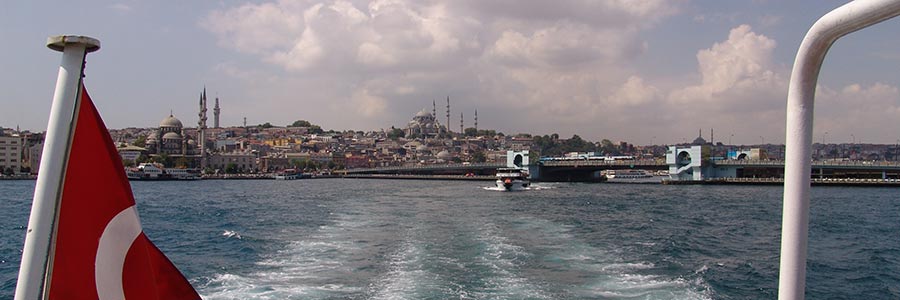
Since the founding of the republic in 1923 as the successor state to the Ottoman Empire, Turkey has been secular and Kemalist in orientation. The country's founder, Mustafa Kemal Atatürk, initiated a modernization of Turkey through social and legal reforms modelled on various European nation states.
The current President Recep Tayyip Erdoğan has been at the helm of the country since 2003. Since around 2012, he has led the country in an increasingly authoritarian manner. Freedom of expression and freedom of the press in particular are considered to be severely restricted. The currency and debt crisis triggered by its economic policies as well as high inflation have continued since 2018, which makes Turkey quite attractive from a tourist perspective.
The culture of today's Turkey is a fusion of the ancient Turkish nomadic culture of Central Asia and Siberia, the Greco-Roman era, the culture in the Ottoman Empire with its Byzantine, Persian, Arabic, Caucasian, Armenian and Kurdish influences, as well as the strong European direction since the founding of the Republic Ataturk. The cultural centre of the country is the metropolis of Istanbul.
With the political changes, the content of Turkish literature also changed. Early representatives include Fakir Baykurt, Sabahattin Ali, Sait Faik Abasıyanık and Yaşar Kemal, who put ordinary people at the centre of their work. With the turn to describing living conditions, social and political criticism of the state is inevitable. The state reacts with censorship and political violence. Authors like Nâzım Hikmet, Yaşar Kemal and Aziz Nesin spend many years in Turkish prisons because of the persecution of their publications. Kemal therefore referred to the prison as a “school of Turkish literature”.
Turkish cuisine has also influenced Greek and the rest of the Balkan cuisine - including etymology. For example, tzaziki comes from the Turkish cacık, and Ćevapčići comes from kabapcik. Yogurt also comes from Turkish Yoğurt. Doner kebab is made from beef, veal or poultry. In Turkey, but also in other countries, the kebab is also served on a plate.

More interesting is the antique town Naula in the middle of Mahmutlar. On the coast road from Alanya turn north (sign) by a cemetery in the eastern part of Mahmutlar.

This caravanserai is on the main road 15 km west of Alanya and it is the first overnight accommodation before Alara Han on the route to Antalya. Today it is used as a restaurant and for Turkish evenings, and normally the interior is closed except on special occasions.
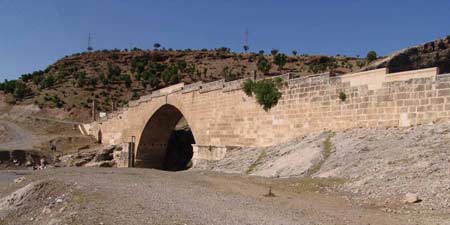
In the southeast of Turkey, as part of our project, we followed the traces of the Roman road from Samosata towards Militene and came across the ancient Roman arched bridge over the Chabinas River near the town of Eski Kahta.
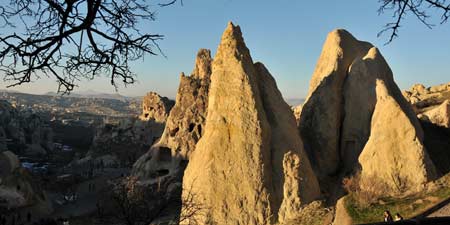
After a few years, acquaintances that arose during the Travel Turkey trade fair in Izmir led us to travel again to Cappadocia, this incredibly fascinating landscape that has been shaped over thousands of years by volcanoes, soil erosion and erosion in the interaction of the natural forces of water and wind were created.
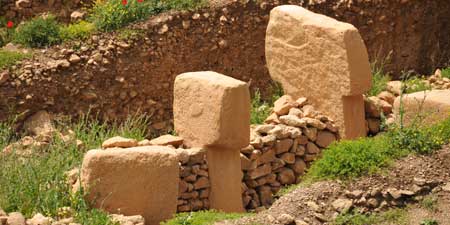
In the history of human settlements, there have been a wide variety of structures in the creation of village communities, all of which have by no means been explored and thus known.
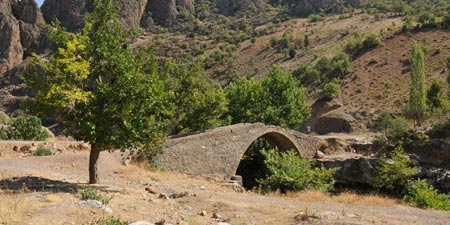
Once again, the cloudless sky on the Turkish Riviera near Alanya promises good weather conditions for a trip across the Taurus Mountains towards Konya. Since winter is over in the high mountains too, we decide again to take the Mahmutlar route in the direction of Taskent.
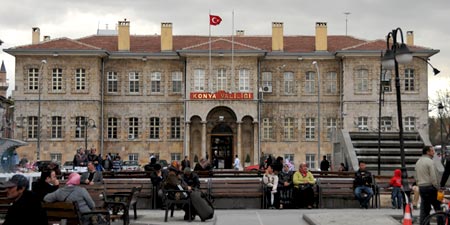
Especially in the last 5 years, the provincial capital of Konya (the province of Konya is as big as Switzerland) has developed at breakneck speed.
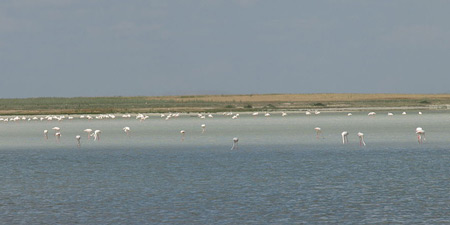
In the immediate vicinity of the city of Kırşehir, which now also has around 110,000 inhabitants, there is an important local recreation destination for the city, which is now also attracting a lot of attention among friends of bird watching and nature conservation, the Seyfe Lake.
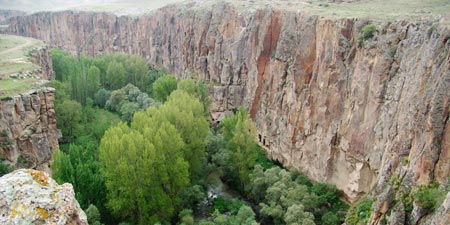
Coming from Güzelyurt (Province of Aksaray) we stop at the parking lot of the Ihlara Valley (Ihlara Vadisi), which is known for its numerous rock-cut churches, which is cleverly framed by several restaurants at the entrance area.
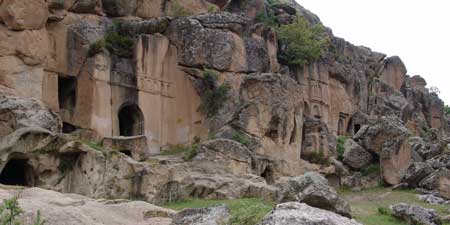
During our tour through southwestern Cappadocia, we came to Güzelyurt, a small town of approx. 3,100 inhabitants, which is about 32 kilometers east of the provincial capital Aksaray.
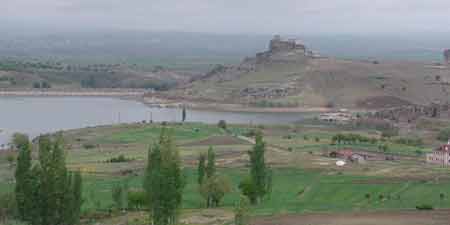
When you talk about the great rivers of Turkey, you immediately think of the two great rivers, the Euphrates and Tigris. However, both rivers leave Turkish territory again after relatively short stretches.

The caves, rock houses and grand stone formations in Turkey's Cappadocia region draw tourists from around the world. Nestled among these natural wonders, however, lies a village where the earth is believed to deliver death rather than rewards.

The Güney waterfall, called Güney Şelalesi in Turkish, is a waterfall in the Denizli province in western Turkey not far from the city of Aydin.

The city, like the Çankırı district of the same name, is located about 140 kilometers northeast of Ankara in a wide valley at about 800 meters above sea level.

Sivrihisar, called Justianapolis in Roman times, is an Anatolian city near the motorway from Eskişehir to Ankara at the junction to Afyonkarahisar and on to Izmir.

Since the current wind conditions on Karadag were not suitable for paragliding, we decided at short notice to take a day trip from Karaman to the Aladağlar Mountains.

Like so many before us, we are on our way to an increasingly popular destination: the Tinaztepe Caves, because a trip to the Tinaztepe Cave (Tinaztepe Mağarsı) is worthwhile just because of the drive through the wild and romantic mountains of the Taurus Mountains.

Anyone who walks through Niğde Museum of Art History with open eyes will certainly come across the name Tyana several times, an ancient metropolis that has so far been little known from a tourist point of view.

Whenever you travel to the Cappadocia region, you shouldn't just pass by Niğde, so strong is the progress in the city and so strong are the changes in the entire region.
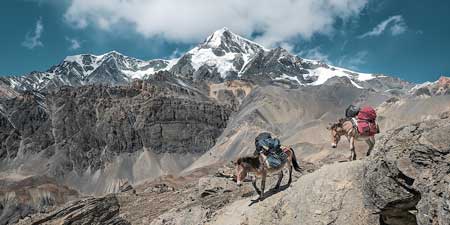
We were coming from Niğde / Cappadocia in the direction of Aksaray, when we probably had chosen the wrong junction in the village of Bor, which had now led us along the mountains of Hasan Dağı to the village of Altunhisar.